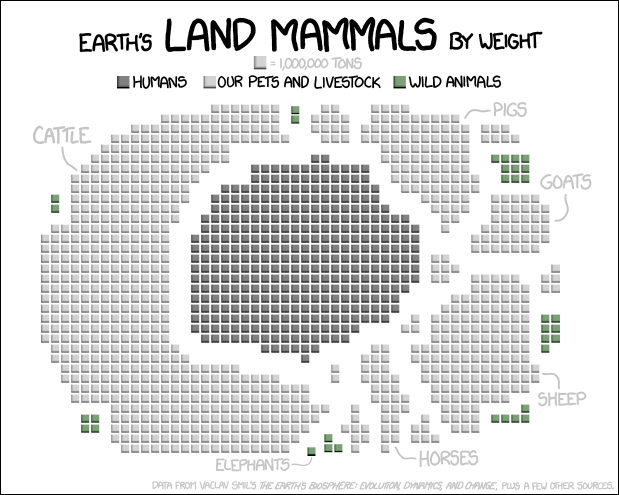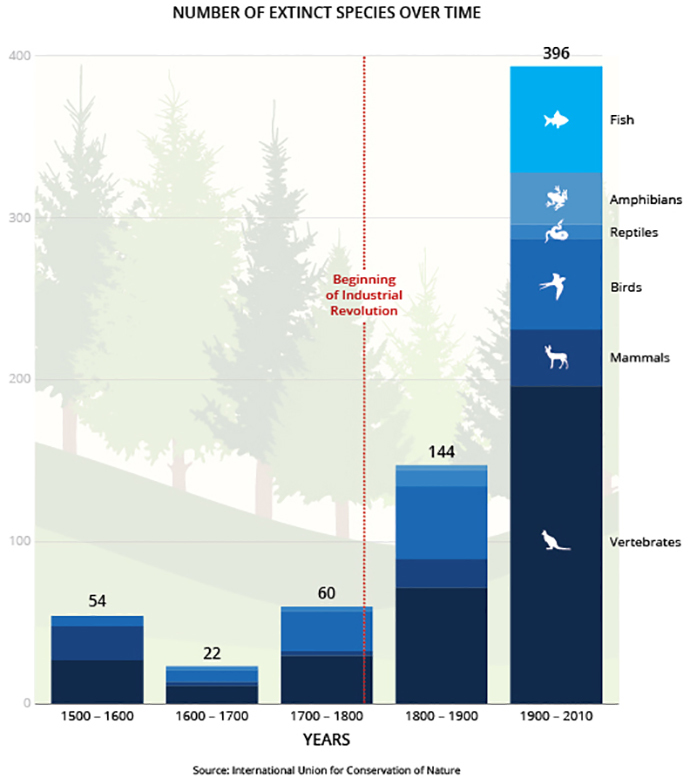LelandJ
Chicken Testicle Enthusiast
- Messages
- 6,002
Thread for die-offs.
Follow along with the video below to see how to install our site as a web app on your home screen.
Note: This feature may not be available in some browsers.

I'm going to get grandmama to use that for a needlepoint pattern. It will look pretty in her living room over the chesterfield covered in plastic
See those burger cattle are necessary to keep the human weight increasing!
The overall picture is absolutely doom and gloom but I don't expect the average person to have the psychological capacity to accept reality.
I'd question why you continue living if the world is so terrible, but I don't want to do anything that would deprive the world of your dazzling brilliance. Your psychological capacity for doom and gloom is simply astounding. If only everyone thought the way you do, the world would be such a better place.


Now, God would not let a strain of animal entirely die out before End Times.... Oh shiIsn't history a continual story of things dying off that didn't adapt to their surroundings? Why should we be sad that it continues now?
I think you intended this for the "Bad Parts of Islam" thread.Kill em' all and let God sort them out.
Next you're gonna be saying global warming ain't that bad either like rest the herd.

Plankton eat plastic? Why am I recycling plastic then?
Plankton eat plastic? Why am I recycling plastic then?
Kinda my thought. Those pictures seem to indicate species flourishing, but I guess it's bad because it's the wrong type of species or something. Diversity, change, and invasive aliens are all horrific to the modern environmental movement.
Every summer, the Yellow Sea turns green as a thick carpet of algae covers the beaches of Shangdong Province, eastern China. People living in Qingdao and nearby coastal towns have grown accustomed to their beaches looking more like verdant meadows every July.
Oh you really believe this existed before pollution?
Not before pollution and the expansion of seaweed farming
But now that most of these accidental introductions to islands have happened, the rate of extinctions is dropping, not rising, at least among birds and mammals. Bird and mammal extinctions peaked at 1.6 a year around 1900 and have since dropped to about 0.2 a year. Wilson's 27,000 a year should be producing (pro rata) 26 bird and 13 mammal extinctions a year. Myers would predict even more.
Moreover, according to an analysis by the scholar Willis Eschenbach, of the 190 bird and mammal species that have gone extinct globally in the past 500 years, as recorded on the comprehensive list kept by the American Museum of Natural History, just nine were continental species (if you count Australia as an island, which in ecological terms it is).
They were, in chronological order: the bluebuck, the Labrador duck, the Algerian gazelle, the Carolina parakeet, the slender-billed grackle, the passenger pigeon, the Colombian grebe, the Atitlán grebe and the Omilteme cottontail rabbit. Only the last three vanished after the Second World War - and for all three there is some debate as to whether they were full species or sub-species. Not a single one of the nine went extinct because of forest loss or climate change. Most succumbed to hunting, or, in the case of grebes, introduced predatory fish.
Eschenbach says: "This lack of even one continental forest bird or mammal extinction, in a record encompassing 500 years of massive cutting, burning, harvesting, inundating, clearing and general widespread destruction and fragmentation of forests on all the continents of the world, provides a final and clear proof that the species-area relationship simply does not work to predict extinctions."
There are plenty more species that are threatened, endangered and of concern, some of which are probably irretrievable. A desperate attempt is under way to take eggs from Siberian nests of the last 100 or so pairs of spoon-billed sandpipers and rear chicks in captivity. Yet, remarkably, we have doubled the human population since 1965 while reducing, rather than increasing, the extinction rate of wild species, especially in the most industrialised countries. It is now 167 years since a bird native to Europe went globally extinct (the great auk), though the slender-billed curlew is almost certainly now gone. Of course the extinction rate of lesser creatures than birds and mammals may be accelerating, but there is no hard evidence either way.
I am not denigrating the efforts of those who try to prevent extinctions. I have three times worked on projects to avert the extirpation of birds - the western tragopan, the cheer pheasant and the lesser florican, all still extant but rare. But the constant repetition of the baseless meme that we are causing a mass extinction 100 or 1,000 times as fast as the natural background extinction rate is counter-productive.
On the bright side, upon which you, Rambo and the thousands of people whose livelihood depends on this sort of thing can't bear to look...
http://www.rationaloptimist.com/blog/counting-species-out/
Again, my point is not to ignore the damage, it is to highlight the progress and focus us on habitat conservation, rather than largely symbolic efforts to reduce carbon emissions.